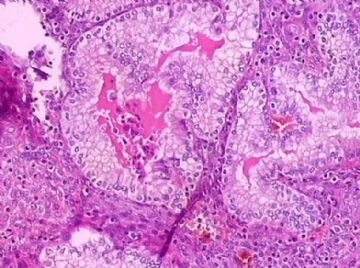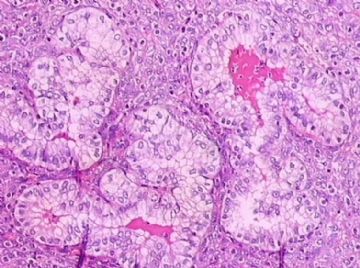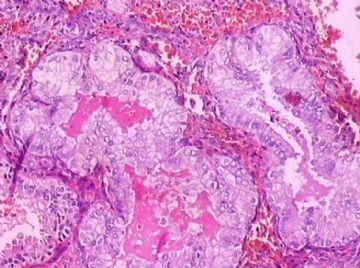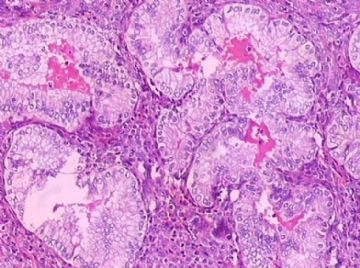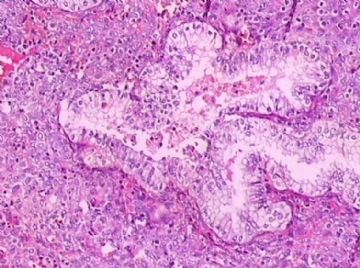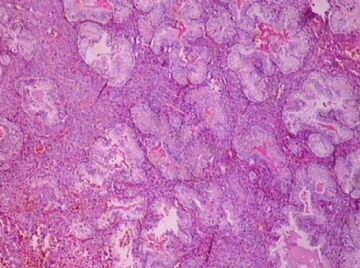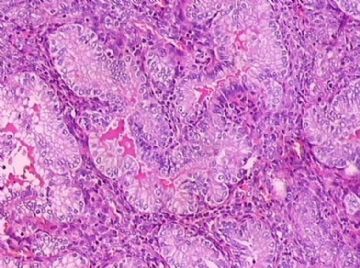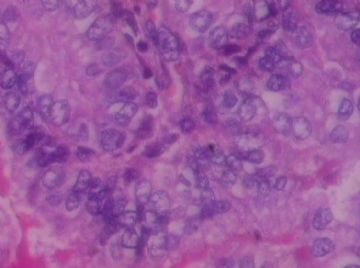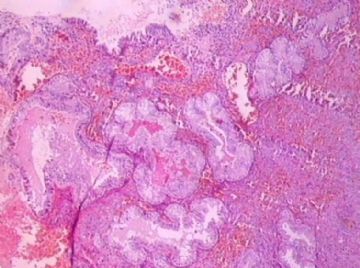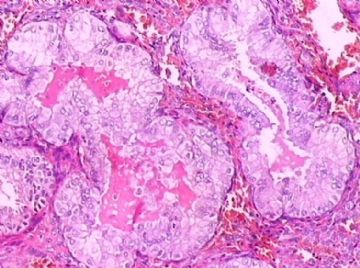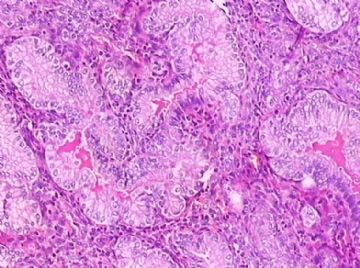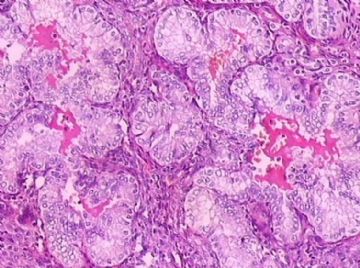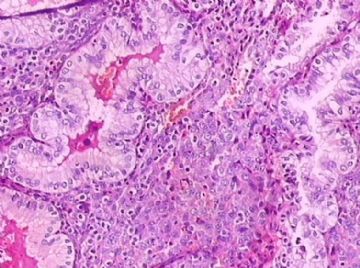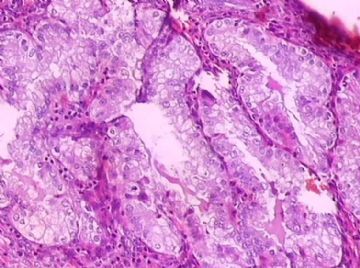| 图片: | |
|---|---|
| 名称: | |
| 描述: | |
- B1745子宫内膜39岁,请教各位老师是复杂增生还是分泌
| 姓 名: | ××× | 性别: | 年龄: | ||
| 标本名称: | |||||
| 简要病史: | 不规则流血1个月 | ||||
| 肉眼检查: | |||||
-
本帖最后由 于 2009-06-14 11:59:00 编辑

- 努力的工作,快乐的生活!
相关帖子
Based on decidualized stroma and secretory endometrial glands, it is the SECRETORY ENDOMETRIUM, not complex hyperplasia.
Now I would like comment on so-called "drug effect" on endometrium, since several of you mentioned above on drug effect in this case. The drug effect usually means progestin-related changes. The morphologic changes in endometrium will be dramatically different between endogenous and exogenous progestin. In response to high level of endogenous progestin produced by a woman herself, both endometrial stroma and glands will show changes as seen in this case. However, human body is smart enough to recognize some progestin is not produced by themselve. In response to exogenous progestin, such as oral contraceptive pills with high dose of progestin, endometrial stroma shows significant decidualized changes which is much more dramatic than endogenous progestin. However, endometrial glands are often inactive or even atrophic, lacking secretory change. This asynchronized morphologic changes between endometrial stroma and glands is the hallmark for indication of exogenous "drug usage". The degree of glandular atrophy is proportionally correlated to the dosage of progestin. High dose progestin is used clinically for treatment of endometrial hyperplasia, stop bleeding and other situations. In case of treatment of complex or atypical complex hyperplasia, the hyperplastic glands often become atrophic. But squamous metaplasia will be less respond to progestin and is often persistent in the follow-up endometrial biopsy.
Therefore, when you toss a differential diagnosis of "drug effect" in the future, please make sure you examine both stroma and glandular changes.

- 不坠青云之志,长怀赤子之心

